A Study on the Emergence and Resilience of Integrated Management Systems in Organizations with an Industrial Profile in Romania
Abstract
1. Introduction
1.1. Resilience
1.2. Emergence
2. Research Methodology
2.1. Methodology
2.2. Data Collection
3. Results
3.1. Indicators of Knowledge of the Standards with Which Romanian Organizations Are Certified
3.2. Considerations for IMS Opportunity Indicators
- Reducing the costs of organizations/common requirements of standards/continuous improvement—representing 32.65% of respondents’ preferences;
- Increasing customer satisfaction, quality products, product compliance, increasing performance, effectiveness, opportunities for improvement and increasing the company’s image—representing 17.01% of respondents’ preferences;
- Reducing risks, increasing profit, reducing duplicates, focusing on objectives, improving communication and training staff—representing 16.33% of respondents’ preferences;
- Decrease in documentation, increase in organizational efficiency and new customers—representing 8.16% of respondents’ preferences;
- New partnerships with external clients, development of the company/reduction in production costs/increase in the number of clients—being tied at 6.12%, representing the respondents’ preferences.
3.3. The Degree of Knowledge of the Advantages of IMS
- Efficiency, which was preferred by over 80% of respondents;
- Improved operational efficiency, which accounted for over 70% of responses;
- Cost reduction, which also accounted for more than 70% of the responses;
- Reduction in duplicates and written documentation, which was preferred by more than 45% of respondents;
- Simplification of procedures, which was preferred by over 40% of respondents;
- Reducing the time for audits, which was preferred by just over 10%;
- External advantages, which were preferred by below 10%;
- Implementation of management systems in a shorter time, which was preferred by under 5%;
- Social benefits were preferred by less than 1%.
3.4. Considerations on IMS Internal Barrier Indicators
3.5. Elements That Can Be Considered as Representing External Barriers to IMS Implementation
3.6. Indicator Considerations for IMS Strategies
- Courses in the field/continuous training of staff and orientation towards customer satisfaction were used by 31.29% of the organizations;
- The PDCA method was followed, and used by 29.73% of the responding organizations.
- 3.
- Establishment of the company’s mission, long-term strategic objectives, resources, and advantages, which was used by 9.52% of the responding organizations;
- 4.
- Studying the standards carefully; integration process planning; integration itself; evaluation; improvement of nonconformities, which were used by 5.41% of the responding organizations;
- 5.
- The brainstorming method, which was used by 4.76% of the responding organizations.
3.7. Considerations Regarding Risk Indicators When Implementing IMS
3.8. The Study on the Performance Indicators Used
- The score obtained from customer audits—representing 51.68% of the responses;
- The score obtained following the annual audits—representing 24.83% of the responses;
- The annual profit obtained—representing 18.79% of the responses;
- The number of complaints received from customers—representing 3.36% of the responses;
- The semi-annual or annual evaluation (score) received from clients—representing 1.34% of the responses.
3.9. Considerations for Indicators of Elements That Are Not Amenable to Integration
3.10. Considerations Regarding the Indicators of the Integration Model Used for IMS Implementation
3.11. Considerations Regarding the Indicators and Typology of Conducting IMS Audits
3.12. Information and Documents That an IMS Should Include
3.13. IMS Implementation Considerations
4. Discussion
4.1. Empirical and Theoretical Contributions
4.2. Limitations and Future Implications
5. Conclusions
Author Contributions
Funding
Informed Consent Statement
Data Availability Statement
Conflicts of Interest
Abbreviations
| IMS | Integrated management system |
| KPI | Key performance indicator |
Appendix A
| The Aspect Evaluated | To a Very Large Extent | Very Much | Somewhat | To a Small Extent | Not at All |
| Improving efficiency by optimizing the use of resources | |||||
| Improving the ability to respond to customer needs | |||||
| Higher level of employee satisfaction | |||||
| Improving motivation | |||||
| Improving the organizational climate | |||||
| Improving communication | |||||
| Improving knowledge exchange | |||||
| Improving the systematization of procedures | |||||
| Defining responsibilities | |||||
| Reducing bureaucracy | |||||
| Improving organizational image | |||||
| Better relationship with stakeholders | |||||
| Improving competitiveness | |||||
| Difficulties in maintaining management system certification |
References
- Karapetrovic, S. Musings on integrated management systems. Meas. Bus. Excell. 2003, 7, 4–13. [Google Scholar] [CrossRef]
- Williams, J.A. The impact of motivating factors on implementation of ISO 9001:2000 registration process. Manag. Res. News 2004, 27, 74–84. [Google Scholar] [CrossRef]
- Bernardo, M.; Casadesus, M.; Karapetrovic, S.; Heras, I. An empirical study on the integration of management system audits. J. Clean. Prod. 2010, 18, 486–495. [Google Scholar] [CrossRef]
- Thomé, A.M.T.; Scavarda, L.F.; Scavarda, A.J. Conducting systematic literature review in operations management. Prod. Plan. Control. 2016, 27, 408–420. [Google Scholar] [CrossRef]
- Andreasen, L.E.; den Hertog, F.; Coriat, B.; Kaplinsky, R. Europe’s Next Step: Organisational Innovation, Competition and Employment; Psychology Press: East Sussex, UK, 1995; ISBN 071464630X. [Google Scholar]
- Jørgensen, T.H.; Remmen, A.; Mellado, M.D. Integrated management systems–three different levels of integration. J. Clean. Prod. 2006, 14, 713–722. [Google Scholar] [CrossRef]
- Asif, M.; de Bruijn, E.J.; Fisscher, O.A.M.; Searcy, C.; Steenhuis, H. Process embedded design of integrated management systems. Int. J. Qual. Reliab. Manag. 2009, 26, 261–282. [Google Scholar] [CrossRef]
- Cherciu, M.; Popescu, D.; Buzatu, S. Study on the implementation of the integrated management systems in two Romanian companies. Ann. Constantin Brancusi Univ. Targu-Jiu Eng. Ser. 2015, 139–144. [Google Scholar]
- Bernardo, M.; Gotzamani, K.; Vouzas, F.; Casadesus, M. A qualitative study on integrated management systems in a non-leading country in certifications. Total Qual. Manag. Bus. Excell. 2018, 29, 453–480. [Google Scholar] [CrossRef]
- Cabecinhas, M.; Domingues, P.; Sampaio, P.; Bernardo, M.; Franceschini, F.; Galetto, M.; Gianni, M.; Gotzamani, K.; Mastrogiacomo, L.; Hernandez-Vivanco, A. Integrated management systems diffusion models in South European countries. Int. J. Qual. Reliab. Manag. 2018, 35, 2289–2303. [Google Scholar] [CrossRef]
- Kruse, T.; Veltri, A.; Branscum, A. Integrating safety, health and environmental management systems: A conceptual framework for achieving lean enterprise outcomes. J. Saf. Res. 2019, 71, 259–271. [Google Scholar] [CrossRef]
- Karapetrovic, S.; Casadesús, M. Implementing environmental with other standardized management systems: Scope, sequence, time and integration. J. Clean. Prod. 2009, 17, 533–540. [Google Scholar] [CrossRef]
- Burnard, K.; Bhamra, R. Organisational resilience: Development of a conceptual framework for organisational responses. Int. J. Prod. Res. 2011, 49, 5581–5599. [Google Scholar] [CrossRef]
- Xu, L.D.; Xu, E.L.; Li, L. Industry 4.0: State of the art and future trends. Int. J. Prod. Res. 2018, 56, 2941–2962. [Google Scholar] [CrossRef]
- Gunderson, L.H. Ecological resilience—In theory and application. Annu. Rev. Ecol. Syst. 2000, 31, 425–439. [Google Scholar] [CrossRef]
- Cumming, G.S.; Barnes, G.; Perz, S.; Schmink, M.; Sieving, K.E.; Southworth, J.; Binford, M.; Holt, R.D.; Stickler, C.; Van Holt, T. An exploratory framework for the empirical measurement of resilience. Ecosystems 2005, 8, 975–987. [Google Scholar] [CrossRef]
- Starr, R.; Newfrock, J.; Delurey, M. Enterprise resilience: Managing risk in the networked economy. Strategy Bus. 2003, 30, 70–79. [Google Scholar]
- Burnard, K.J.; Bhamra, R. Challenges for organisational resilience. Contin. Resil. Rev. 2019, 1, 17–25. [Google Scholar] [CrossRef]
- Gallos, J. V Learning from the toxic trenches: The winding road to healthier organizations—And to healthy everyday leaders. J. Manag. Inq. 2008, 17, 354–367. [Google Scholar] [CrossRef]
- Ponomarov, S.Y.; Holcomb, M.C. Understanding the concept of supply chain resilience. Int. J. Logist. Manag. 2009, 20, 124–143. [Google Scholar] [CrossRef]
- Holling, C.S. Resilience and stability of ecological systems. Annu. Rev. Ecol. Syst. 1973, 4, 1–23. [Google Scholar] [CrossRef]
- Holling, C.S. Understanding the complexity of economic, ecological, and social systems. Ecosystems 2001, 4, 390–405. [Google Scholar] [CrossRef]
- Walker, B.; Carpenter, S.; Anderies, J.; Abel, N.; Cumming, G.; Janssen, M.; Lebel, L.; Norberg, J.; Peterson, G.D.; Pritchard, R. Resilience management in social-ecological systems: A working hypothesis for a participatory approach. Conserv. Ecol. 2002, 6, 14–35. [Google Scholar] [CrossRef]
- Walker, B.; Holling, C.S.; Carpenter, S.R.; Kinzig, A. Resilience, adaptability and transformability in social–ecological systems. Ecol. Soc. 2004, 9, 5. [Google Scholar] [CrossRef]
- Hillary, R. Small and Medium-Sized Enterprises and the Environment: Business Imperatives; Routledge: New York, USA, 2020; ISBN 9781874719229. [Google Scholar]
- Hamel, G.; Valikangas, L. The quest for resilience. Harv. Bus. Rev. 2003, 81, 52–65. [Google Scholar] [PubMed]
- Christopher, M.; Peck, H. Building the resilient supply chain. Int. J. Logist. Manag. 2004, 15, 1–13. [Google Scholar] [CrossRef]
- Lengnick-Hall, C.A.; Beck, T.E. Adaptive fit versus robust transformation: How organizations respond to environmental change. J. Manag. 2005, 31, 738–757. [Google Scholar] [CrossRef]
- Hollnagel, E.; Woods, D.D.; Leveson, N. Resilience Engineering: Concepts and Precepts; Taylor & Francis Ltd: Oxfordshire, UK, 2006; ISBN 0754649040. [Google Scholar]
- Grøtan, T.O.; Størseth, F. Integrated safety management based on organizational resilience. In Advances in Safety, Reliability and Risk Management; CRC Press: Boca Raton, FL, USA, 2012; pp. 1732–1740. [Google Scholar]
- Williams, R.; Bertsch, B.; Dale, B.; Van Der Wiele, T.; Van Iwaarden, J.; Smith, M.; Visser, R. Quality and risk management: What are the key issues? TQM Mag. 2006, 18, 67–86. [Google Scholar] [CrossRef]
- Ronalter, L.M.; Poltronieri, C.F.; Gerolamo, M.C. ISO management system standards in the light of corporate sustainability: A bibliometric analysis. TQM J. 2023, 35, 256–298. [Google Scholar] [CrossRef]
- Rice, J.B.; Caniato, F. Building a secure and resilient supply network. Supply Chain Manag. Rev. 2003, 7, 22–30. [Google Scholar]
- Chen, J.; Chen, T.H.Y.; Vertinsky, I.; Yumagulova, L.; Park, C. Public–private partnerships for the development of disaster resilient communities. J. Contingencies Crisis Manag. 2013, 21, 130–143. [Google Scholar] [CrossRef]
- Balugani, E.; Butturi, M.A.; Chevers, D.; Parker, D.; Rimini, B. Empirical evaluation of the impact of resilience and sustainability on firms’ performance. Sustainability 2020, 12, 1742. [Google Scholar] [CrossRef]
- Settembre-Blundo, D.; González-Sánchez, R.; Medina-Salgado, S.; García-Muiña, F.E. Flexibility and resilience in corporate decision making: A new sustainability-based risk management system in uncertain times. Glob. J. Flex. Syst. Manag. 2021, 22, 107–132. [Google Scholar] [CrossRef]
- Lopez-Ruiz, R.; Mancini, H.L.; Calbet, X. A statistical measure of complexity. Phys. Lett. A 1995, 209, 321–326. [Google Scholar] [CrossRef]
- Madsen, T.K.; Servais, P. The internationalization of born globals: An evolutionary process? Int. Bus. Rev. 1997, 6, 561–583. [Google Scholar] [CrossRef]
- Bar-Yam, Y. Dynamics of Complex Systems; CRC Press: Boca Raton, FL, USA, 2019; ISBN 0429697589. [Google Scholar]
- Gutteridge, J.M.C.; Halliwell, B. Free radicals and antioxidants in the year 2000: A historical look to the future. Ann. N. Y. Acad. Sci. 2000, 899, 136–147. [Google Scholar] [CrossRef]
- Pereira, A.C.; Romero, F. A review of the meanings and the implications of the Industry 4.0 concept. Procedia Manuf. 2017, 13, 1206–1214. [Google Scholar] [CrossRef]
- Moumen, M.; El Aoufir, H. Quality, safety and environment management systems (QSE): Analysis of empirical studies on integrated management systems (IMS). J. Decis. Syst. 2017, 26, 207–228. [Google Scholar] [CrossRef]
- Santamaría-Bonfil, G.; Gershenson, C.; Fernández, N. A Package for Measuring emergence, Self-organization, and Complexity Based on Shannon entropy. Front. Robot. AI 2017, 4, 10. [Google Scholar] [CrossRef]
- Kazemi, M.; Zafar Allahyari, M. Defining a knowledge management conceptual model by using MADM. J. Knowl. Manag. 2010, 14, 872–890. [Google Scholar] [CrossRef]
- Connor Desai, S.; Reimers, S. Comparing the use of open and closed questions for Web-based measures of the continued-influence effect. Behav. Res. Methods 2019, 51, 1426–1440. [Google Scholar] [CrossRef]
- Durant, L.E.; Carey, M.P. Self-administered questionnaires versus face-to-face interviews in assessing sexual behavior in young women. Arch. Sex. Behav. 2000, 29, 309–322. [Google Scholar] [CrossRef]
- Mellenbergh, G.J. Tests and questionnaires Analysis. In Advising on Research Methods: A Consultant’s Companion; Johannes van Kessel Publishing: Huizen, The Netherlands, 2008; pp. 235–268. [Google Scholar]
- Siniscalco, M.T.; Auriat, N. Questionnaire Design: Quantitative Research Methods in Educational Planning; UNESCO International Institute for Educational Planning: Paris, France, 2005; pp. 1–85. [Google Scholar]
- Yaddanapudi, S.; Yaddanapudi, L.N. How to design a questionnaire. Indian J. Anaesth. 2019, 63, 335–337. [Google Scholar] [CrossRef]
- Lee, N.; Lings, I. Doing Business Research: A Guide to Theory and Practice; Sage Publications Ltd.: New York, NY, USA, 2008; ISBN 978-1-4129-2878-6. [Google Scholar]
- Salomone, R. Integrated management systems: Experiences in Italian organizations. J. Clean. Prod. 2008, 16, 1786–1806. [Google Scholar] [CrossRef]
- De Vaus, D.; de Vaus, D. Surveys in Social Research; Routledge: London, UK, 2013; ISBN 0203519191. [Google Scholar]
- Bell, E.; Bryman, A.; Harley, B. Business Research Methods; Oxford University Press: Oxford, UK, 2022; ISBN 0198869444. [Google Scholar]
- Simon, A.; Karapetrovic, S.; Casadesus, M. Evolution of integrated management systems in Spanish firms. J. Clean. Prod. 2012, 23, 8–19. [Google Scholar] [CrossRef]
- Rattray, J.; Jones, M.C. Essential elements of questionnaire design and development. J. Clin. Nurs. 2007, 16, 234–243. [Google Scholar] [CrossRef]
- Sinha, R.; Van Den Heuvel, W.J.; Arokiasamy, P. Validity and reliability of MOS short form health survey (SF-36) for use in India. Indian J. Community Med. 2013, 38, 22–26. [Google Scholar] [CrossRef] [PubMed]
- Tsang, S.; Royse, C.F.; Terkawi, A.S. Guidelines for developing, translating, and validating a questionnaire in perioperative and pain medicine. Saudi J. Anesth. 2017, 11, S80–S89. [Google Scholar] [CrossRef]
- Dongare, P.A.; Bhaskar, S.B.; Harsoor, S.S.; Kalaivani, M.; Garg, R.; Sudheesh, K.; Goneppanavar, U. Development and validation of a questionnaire for a survey on perioperative fasting practices in India. Indian J. Anaesth. 2019, 63, 394–399. [Google Scholar] [CrossRef]
- Gobbens, R.J.; Uchmanowicz, I. Assessing frailty with the Tilburg Frailty Indicator (TFI): A review of reliability and validity. Clin. Interv. Aging 2021, 16, 863–875. [Google Scholar] [CrossRef]
- McDowell, I. Measuring Health: A Guide to Rating Scales and Questionnaires; Oxford University Press: Oxford, UK, 2006; ISBN 0195165675. [Google Scholar]
- Taber, K.S. The use of Cronbach’s alpha when developing and reporting research instruments in science education. Res. Sci. Educ. 2018, 48, 1273–1296. [Google Scholar] [CrossRef]
- Dillman, D.A.; Phelps, G.; Tortora, R.; Swift, K.; Kohrell, J.; Berck, J.; Messer, B.L. Response rate and measurement differences in mixed-mode surveys using mail, telephone, interactive voice response (IVR) and the Internet. Soc. Sci. Res. 2009, 38, 1–18. [Google Scholar]
- Cornicelli, L.; Grund, M.D. Assessing deer hunter attitudes toward regulatory change using self-selected respondents. Hum. Dimens. Wildl. 2011, 16, 174–182. [Google Scholar]
- Lesser, V.M.; Yang, D.K.; Newton, L.D. Assessing hunters’ opinions based on a mail and a mixed-mode survey. Hum. Dimens. Wildl. 2011, 16, 164–173. [Google Scholar]
- Sexton, N.R.; Miller, H.M.; Dietsch, A.M. Appropriate uses and considerations for online surveying in human dimensions research. Hum. Dimens. Wildl. 2011, 16, 154–163. [Google Scholar]
- Graefe, A.; Mowen, A.; Covelli, E.; Trauntvein, N. Recreation participation and conservation attitudes: Differences between mail and online respondents in a mixed-mode survey. Hum. Dimens. Wildl. 2011, 16, 183–199. [Google Scholar]
- Bowen, P.W.; Rose, R.; Pilkington, A. Mixed methods-theory and practice. Sequential, explanatory approach. Int. J. Quant. Qual. Res. Methods 2017, 5, 10. [Google Scholar]
- Tu, M. An exploratory study of Internet of Things (IoT) adoption intention in logistics and supply chain management: A mixed research approach. Int. J. Logist. Manag. 2018, 29, 131–151. [Google Scholar]
- Theofanidis, D.; Fountouki, A. Limitations and delimitations in the research process. Perioper. Nurs.-Q. Sci. Online Off. J. GORNA 2018, 7, 155–163. [Google Scholar]
- Guest, G.; Bunce, A.; Johnson, L. How many interviews are enough? An experiment with data saturation and variability. Field Methods 2006, 18, 59–82. [Google Scholar]
- Mason, M. Sample Size and Saturation in PhD Studies Using Qualitative Interviews. Forum Qual. Sozialforschung Forum Qual. Soc. Res. 2010, 11, 8. [Google Scholar] [CrossRef]
- Marshall, B.; Cardon, P.; Poddar, A.; Fontenot, R. Does sample size matter in qualitative research?: A review of qualitative interviews in IS research. J. Comput. Inf. Syst. 2013, 54, 11–22. [Google Scholar] [CrossRef]
- Sandelowski, M. Sample size in qualitative research. Res. Nurs. Health 1995, 18, 179–183. [Google Scholar] [CrossRef] [PubMed]
- Boddy, C. A rose by any other name may smell as sweet but “group discussion” is not another name for a “focus group” nor should it be. Qual. Mark. Res. Int. J. 2005, 8, 248–255. [Google Scholar] [CrossRef]
- Boddy, C.R. Groups in focus: The distinctive difference between focus group discussions and focus group interviews. Australas. J. Mark. Soc. Res. 2005, 13, 29–38. [Google Scholar]
- ISO 9001:2015; Quality Management Systems—Requirements. International Organization for Standardization: Geneva, Switzerland, 2015.
- ISO 14001:2015; Environmental Management Systems—Requirements with Guidance for Use. International Organization for Standardization: Geneva, Switzerland, 2015.
- ISO 45001:2018; Occupational Health and Safety Management Systems—Requirements with Guidance for Use. International Organization for Standardization: Geneva, Switzerland, 2018.
- ISO 22000:2018; Food Safety Management Systems. Requirements for Any Organization in the Food Chain. International Organization for Standardization: Geneva, Switzerland, 2018.
- ISO/IEC 27001:2022; Information Security, Cybersecurity and Privacy Protection. Information Security Management Systems. Requirements. International Organization for Standardization: Geneva, Switzerland, 2022.
- ISO 13485:2016; Medical Devices. Quality Management Systems. Requirements for Regulatory Purposes. International Organization for Standardization: Geneva, Switzerland, 2016.
- ISO 50001:2018; Energy Management Systems. Requirements with Guidance for Use. International Organization for Standardization: Geneva, Switzerland, 2018.
- ISO/IEC 20000-1:2018; Information Technology. Service Management—Part 1: Service Management System Requirements. International Organization for Standardization: Geneva, Switzerland, 2018.
- ISO 28000:2022; Security and Resilience. Security Management Systems. Requirements. International Organization for Standardization: Geneva, Switzerland, 2022.
- ISO/IEC 17025:2017; General Requirements for the Competence of Testing and Calibration Laboratories. International Organization for Standardization: Geneva, Switzerland, 2017.
- ISO 22301:2019; Security and Resilience. Business Continuity Management Systems. Requirements. International Organization for Standardization: Geneva, Switzerland, 2019.
- ISO 55001:2014; Asset Management. Asset Management System. Requirements. International Organization for Standardization: Geneva, Switzerland, 2014.
- Dosi, G. Innovation, Organization and Economic Dynamics: Selected Essays; Edward Elgar Publishing: Cheltenham, UK, 2000; ISBN 1782541853. [Google Scholar]
- Barbosa, L.C.F.M.; de Oliveira, O.J.; Machado, M.C.; Morais, A.C.T.; Bozola, P.M.; Santos, M.G.F. Lessons learned from quality management system ISO 9001:2015 certification: Practices and barrier identification from Brazilian industrial companies. Benchmarking Int. J. 2022, 29, 2593–2614. [Google Scholar] [CrossRef]
- Bornay-Barrachina, M.; Rodríguez, M.G.; Amores, M.C.F. Modelos de implantación de los sistemas integrados de gestión de la calidad, el medio ambiente y la seguridad. Investig. Eur. Dir. Econ. Empresa 2002, 8, 97–118. [Google Scholar]
- Rane, S.B.; Kirkire, M.S. Analysis of barriers to medical device development in India: An interpretive structural modelling approach. Int. J. Syst. Assur. Eng. Manag. 2016, 7, 356–369. [Google Scholar] [CrossRef]
- de Sousa Mendes, G.H.; Salgado, E.G.; Ferrari, B.E.M. Prioritization of TQM practices in Brazilian medical device SMEs using Analytical Hierarchy Process (AHP). DYNA Rev. Fac. Minas. Univ. Nac. Colomb. Sede Medellín 2016, 83, 194–202. [Google Scholar]
- Rebelo, M.F.; Silva, R.; Santos, G.; Mendes, P. Model based integration of management systems (MSs)–Case study. TQM J. 2016, 6, 907–932. [Google Scholar] [CrossRef]
- Caines, P.; Baird, P.; Whanger, K. Eight Common Myths and Misunderstandings About Risk Management. Biomed. Instrum. Technol. 2015, 49, 13–17. [Google Scholar] [CrossRef]
- VG, G. Risk Based Approach in Medical Device Quality Management System in COVID-19 Pandemic. Asian J. Res. Bus. Manag. 2021, 3, 112–118. [Google Scholar]
- Rivas, T.R.-P.; Martínez, E.M.; Sigler, A.F.; Rubio, J.A.R.; Fuentes, L.C.; Méndez, J.F.; García, T.G.; Portieles, I.J.L.E. Risk Management of Medical Devices in the ICID. In Proceedings of the VI Latin American Congress on Biomedical Engineering CLAIB 2014, Paraná, Argentina, 29–31 October 2014; Springer: Berlin/Heidelberg, Germany, 2015; pp. 718–721. [Google Scholar]
- Wang, T.; Moczygemba, J. Risk Management in EHR implementation. J. Am. Health Inf. Manag. Assoc. 2015, 22, 9–12. [Google Scholar]
- Kirkire, M.S.; Rane, S.B.; Singh, S.P. Integrated SEM-FTOPSIS framework for modeling and prioritization of risk sources in medical device development process. Benchmarking Int. J. 2018, 25, 178–200. [Google Scholar] [CrossRef]
- Michael, S.; Mapunde, T.M.; Elgar, N.; Brown, J. A quality improvement study for medical devices usage in an acute healthcare setting. J. Med. Eng. Technol. 2018, 42, 344–351. [Google Scholar] [CrossRef] [PubMed]
- Guerra-Bretaña, R.M.; Flórez-Rendón, A.L. Impact of regulations on innovation in the field of medical devices. Res. Biomed. Eng. 2018, 34, 356–367. [Google Scholar] [CrossRef]
- Hale, D.; Fallon, E.F.; FitzGerald, C. An equipment qualification framework for healthcare. IISE Trans. Healthc. Syst. Eng. 2020, 10, 47–59. [Google Scholar] [CrossRef]
- Águas, B.; Sobral, J. Development of a risk management tool for healthcare providers. In Proceedings of the 2019 IEEE 6th Portuguese Meeting on Bioengineering (ENBENG), Lisbon, Portugal, 22–23 February 2019; IEEE: Piscataway, NJ, USA, 2019; pp. 1–4. [Google Scholar]
- Ikram, M.; Sroufe, R.; Zhang, Q. Prioritizing and overcoming barriers to integrated management system (IMS) implementation using AHP and G-TOPSIS. J. Clean. Prod. 2020, 254, 120121. [Google Scholar] [CrossRef]
- Labodová, A. Implementing integrated management systems using a risk analysis based approach. J. Clean. Prod. 2004, 12, 571–580. [Google Scholar] [CrossRef]
- Bernardo, M. Integration of management systems as an innovation: A proposal for a new model. J. Clean. Prod. 2014, 82, 132–142. [Google Scholar] [CrossRef]
- Bernardo, M.; Simon, A.; Tarí, J.J.; Molina-Azorín, J.F. Benefits of management systems integration: A literature review. J. Clean. Prod. 2015, 94, 260–267. [Google Scholar] [CrossRef]
- Zeng, S.X.; Shi, J.J.; Lou, G.X. A synergetic model for implementing an integrated management system: An empirical study in China. J. Clean. Prod. 2007, 15, 1760–1767. [Google Scholar] [CrossRef]
- De Oliveira, O.J. Guidelines for the integration of certifiable management systems in industrial companies. J. Clean. Prod. 2013, 57, 124–133. [Google Scholar] [CrossRef]
- Rebelo, M.F.; Santos, G.; Silva, R. Integration of management systems: Towards a sustained success and development of organizations. J. Clean. Prod. 2016, 127, 96–111. [Google Scholar] [CrossRef]
- Nunhes, T.V.; Motta, L.C.F.; de Oliveira, O.J. Evolution of integrated management systems research on the Journal of Cleaner Production: Identification of contributions and gaps in the literature. J. Clean. Prod. 2016, 139, 1234–1244. [Google Scholar] [CrossRef]
- Will, M.; Brauweiler, J.; Zenker-Hoffmann, A.; Delakowitz, B. An inquiry to consider CSR in integrated management systems. In Social Responsibility and Sustainability; Springer: Berlin/Heidelberg, Germany, 2019; pp. 335–356. [Google Scholar]
- Chruzik, K. Integration model of management systems in Sea Transport. TransNav Int. J. Mar. Navig. Saf. Sea Transp. 2020, 14, 393–396. [Google Scholar] [CrossRef]
- Silvestri, A.; Falcone, D.; Di Bona, G.; Forcina, A.; Gemmiti, M. Global performance index for integrated management system: GPI-IMS. Int. J. Environ. Res. Public Health 2021, 18, 7156. [Google Scholar] [CrossRef]
- de Nadae, J.; Carvalho, M.M.; Vieira, D.R. Integrated management systems as a driver of sustainability performance: Exploring evidence from multiple-case studies. Int. J. Qual. Reliab. Manag. 2020, 38, 800–821. [Google Scholar] [CrossRef]
- Kymal, C.; Gruska, G.; Reid, R.D. Integrated Management Systems: QMS, EMS, OHSMS, FSMS Including Aerospace, Service, Semiconductor/Electronics, Automotive, and Food; Quality Press: Milwaukee, WI, USA, 2015; ISBN 087389894X. [Google Scholar]
- Bugdol, M. Integrated Management Systems; Springer: Berlin/Heidelberg, Germany, 2015; ISBN 3319100289. [Google Scholar]
- Domingues, J.P.T.; Sampaio, P.; Arezes, P.M. Analysis of integrated management systems from various perspectives. Total Qual. Manag. Bus. Excell. 2015, 26, 1311–1334. [Google Scholar] [CrossRef]
- Wilkinson, G.; Dale, B.G. Integrated management systems: A model based on a total quality approach. Manag. Serv. Qual. Int. J. 2001, 11, 318–330. [Google Scholar] [CrossRef]
- Jørgensen, T.H. Towards more sustainable management systems: Through life cycle management and integration. J. Clean. Prod. 2008, 16, 1071–1080. [Google Scholar] [CrossRef]
- O’Neil, D.A.; Petty, M.D. Organizational simulation for model based systems engineering. Procedia Comput. Sci. 2013, 16, 323–332. [Google Scholar] [CrossRef]
- Selakovic, K. Integration and Auditing of Management Systems and Implementation of Customer Satisfaction Standards in Serbia. Master’s Thesis, University of Alberta, Edmonton, AB, Canada, 2016. [Google Scholar]
- Silva, C.; Magano, J.; Moskalenko, A.; Nogueira, T.; Dinis, M.A.P.; Pedrosa e Sousa, H.F. Sustainable management systems standards (SMSS): Structures, roles, and practices in corporate sustainability. Sustainability 2020, 12, 5892. [Google Scholar] [CrossRef]
- Abisourour, J.; Hachkar, M.; Mounir, B.; Farchi, A. Methodology for integrated management system improvement: Combining costs deployment and value stream mapping. Int. J. Prod. Res. 2020, 58, 3667–3685. [Google Scholar] [CrossRef]
- Karapetrovic, S.; Willborn, W. Generic audit of management systems: Fundamentals. Manag. Audit. J. 2000, 15, 279–294. [Google Scholar] [CrossRef]
- Savino, M.M.; Batbaatar, E. Investigating the resources for Integrated Management Systems within resource-based and contingency perspective in manufacturing firms. J. Clean. Prod. 2015, 104, 392–402. [Google Scholar] [CrossRef]
- Campailla, C.; Martini, A.; Minini, F.; Sartor, M. ISO 45001. In Quality Management: Tools, Methods, and Standards; Emerald Publishing Limited: Bradford, UK, 2019; ISBN 1787698041. [Google Scholar]
- Douglas, A.; Glen, D. Integrated management systems in small and medium enterprises. Total Qual. Manag. 2000, 11, 686–690. [Google Scholar] [CrossRef]
- Alfredo, E.I.; Nurcahyo, R. The impact of ISO 9001, ISO 14001, and OHSAS 18001 certification on manufacturing industry operational performance. In Proceedings of the International Conference on Industrial Engineering and Operations Management, Bandung, Indonesia, 6–8 March 2018; pp. 6–8. [Google Scholar]
- Griffith, A. Integrated management systems: A single management system solution for project control? Eng. Constr. Archit. Manag. 2000, 7, 232–240. [Google Scholar] [CrossRef]
- McDonald, M.; Mors, T.A.; Phillips, A. Management system integration: Can it be done? Qual. Prog. 2003, 36, 67. [Google Scholar]
- Zutshi, A.; Sohal, A.S. Integrated management system: The experiences of three Australian organisations. J. Manuf. Technol. Manag. 2005, 16, 211–232. [Google Scholar] [CrossRef]
- Wright, T. IMS—Three into one will go!: The advantages of a single integrated quality, health and safety, and environmental management system. Qual. Assur. J. Qual. Assur. J. Pharm. Health Environ. Prof. 2000, 4, 137–142. [Google Scholar]
- De Oliveira Matias, J.C.; Coelho, D.A. The integration of the standards systems of quality management, environmental management and occupational health and safety management. Int. J. Prod. Res. 2002, 40, 3857–3866. [Google Scholar] [CrossRef]
- Pheng, L.S.; Kwang, G.K. ISO 9001, ISO 14001 and OHSAS 18001 management systems: Integration, costs and benefits for construction companies. Archit. Sci. Rev. 2005, 48, 145–151. [Google Scholar] [CrossRef]
- Zeng, S.X.; Tam, V.W.Y.; Le, K.N. Towards effectiveness of integrated management systems for enterprises. Eng. Econ. 2010, 21, 171–179. [Google Scholar]
- Shillito, D.E. ‘Grand unification theory’ or Should safety, health, environment and quality be managed together or separately? Process Saf. Environ. Prot. 1995, 73, 194–202. [Google Scholar]
- Winder, C. Integrating OHS, environmental, and quality management standards. Qual. Assur. 2000, 8, 105–135. [Google Scholar] [CrossRef]
- Bamber, C.J.; Hides, M.T.; Sharp, J.M. Integrated management systems: An agile manufacturing enabler. In Proceedings of the 1st International Conference on Systems Thinking in Management, Geelong, Australia, 8–10 November 2000; pp. 83–88. [Google Scholar]
- Renzi, M.F.; Cappelli, L. Integration between ISO 9000 and ISO 14000: Opportunities and limits. Total Qual. Manag. 2000, 11, 849–856. [Google Scholar] [CrossRef]
- Palmer, J.; France, C. Informing Smaller Organizations about Environmental Management: An Assessment of Government Schemes. J. Environ. Plan. Manag. 1998, 41, 355–374. [Google Scholar] [CrossRef]
- Aichouni, A.B.E.; Silva, C.; Ferreira, L.M.D.F. A systematic literature review of the integration of total quality management and industry 4.0: Enhancing sustainability performance through dynamic capabilities. Sustainability 2024, 16, 9108. [Google Scholar] [CrossRef]
- Sordan, J.E.; Oprime, P.C.; Pimenta, M.L.; da Silva, S.L.; González, M.O.A. Contact points between Lean Six Sigma and Industry 4.0: A systematic review and conceptual framework. Int. J. Qual. Reliab. Manag. 2022, 39, 2155–2183. [Google Scholar] [CrossRef]
- Holdsworth, R. Practical applications approach to design, development and implementation of an integrated management system. J. Hazard. Mater. 2003, 104, 193–205. [Google Scholar] [CrossRef]
- Fresner, J.; Engelhardt, G. Experiences with integrated management systems for two small companies in Austria. J. Clean. Prod. 2004, 12, 623–631. [Google Scholar]
- Hillary, R. Great Britain Department of Trade and Industry Environment Directorate. In Evaluation of Study Reports on the Barriers, Opportunities and Drivers for Small and Medium Sized Enterprises in the Adoption of Environmental Management Systems; Network for Environmental Management and Auditing: London, UK, 1999. [Google Scholar]
- Simon, A.; Bernardo, M.; Karapetrovic, S.; Casadesús, M. Integration of standardized environmental and quality management systems audits. J. Clean. Prod. 2011, 19, 2057–2065. [Google Scholar] [CrossRef]
- Hilton, S.K.; Madilo, W.; Awaah, F.; Arkorful, H. Dimensions of transformational leadership and organizational performance: The mediating effect of job satisfaction. Manag. Res. Rev. 2021, 46, 1–19. [Google Scholar]
- Gianni, M.; Gotzamani, K. Extrovert integrated management systems. TQM J. 2024, 36, 1880–1899. [Google Scholar]
- Di Noia, A.E.; Nicoletti, G.M. ISO 14001 certification: Benefits, costs and expectations for organization. Stud. Oecon. Posnaniensia 2016, 4, 94–109. [Google Scholar] [CrossRef]
- Zairi, M. Total Quality Management: Contributions to Theory and Application; European Centre for Best Practice Management: Bradford, UK, 2020; ISBN 1674379064. [Google Scholar]
- Zairi, M. Total Quality Management for Engineers; Elsevier: Amsterdam, The Netherlands, 1991; ISBN 1845698916. [Google Scholar]
- Fettermann, D.C.; Cavalcante, C.G.S.; Almeida, T.D.D.; Tortorella, G.L. How does Industry 4.0 contribute to operations management? J. Ind. Prod. Eng. 2018, 35, 255–268. [Google Scholar]
- Nunhes, T.V.; Bernardo, M.; Oliveira, O.J. Guiding principles of integrated management systems: Towards unifying a starting point for researchers and practitioners. J. Clean. Prod. 2019, 210, 977–993. [Google Scholar]
- Aven, T. What is safety science? Saf. Sci. 2014, 67, 15–20. [Google Scholar]
- Bernardo, M.; Casadesus, M.; Karapetrovic, S.; Heras, I. How integrated are environmental, quality and other standardized management systems? An empirical study. J. Clean. Prod. 2009, 17, 742–750. [Google Scholar] [CrossRef]
- Parmenter, D. Key Performance Indicators: Developing, Implementing, and Using Winning KPIs; John Wiley & Sons: Hoboken, NJ, USA, 2015; ISBN 1118925106. [Google Scholar]
- Ispas, L.; Mironeasa, C. KPI indicators and objectives of integrated management systems in industrial companies in Romania. TEHNOMUS 2023, 30, 54–61. [Google Scholar]
- Chaswa, E.N.; Kosamu, I.B.M.; Kumwenda, S.; Utembe, W. Risk perception and its influencing factors among construction workers in Malawi. Safety 2020, 6, 33. [Google Scholar] [CrossRef]
- Rodrigues, M.A.; Arezes, P.M.; Leão, C.P. Risk acceptance in the furniture sector: Analysis of acceptance level and relevant influence factors. Hum. Ecol. Risk Assess. Int. J. 2015, 21, 1361–1378. [Google Scholar] [CrossRef]
- Simon, A.; Douglas, A. Integrating management systems: Does the location matter? Int. J. Qual. Reliab. Manag. 2013, 30, 675–689. [Google Scholar] [CrossRef]
- Ghaffari Sardasht, F.; Jahani Shourab, N.; Jafarnejad, F.; Esmaily, H. The frequency of risk factors associated with pregnancy among women seeking planned pregnancy. J. Midwifery Reprod. Health 2017, 5, 942–949. [Google Scholar]
- Santos, G.; Ramos, D.; Almeida, L.; Rebelo, M.; Pereira, M.; Barros, S.; Vale, P. Sistemas Integrados de Gestão-Qualidade. Ph.D. Dissertation, Escola Superior de Ciências Empresariais, Setúbal, Portugal, 2013. [Google Scholar]
- Fonseca, L. From quality gurus and TQM to ISO 9001:2015: A review of several quality paths. Int. J. Qual. Res. 2015, 9, 167–180. [Google Scholar]
- Testa, F.; Boiral, O.; Iraldo, F. Internalization of environmental practices and institutional complexity: Can stakeholders pressures encourage greenwashing? J. Bus. Ethics 2018, 147, 287–307. [Google Scholar] [CrossRef]
- Simon, A.; Karapetrovic, S.; Casadesus, M. Exploring the options for management system standards and integration levels. Environ. Eng. Manag. J. 2017, 16, 394–400. [Google Scholar] [CrossRef]
- Domingues, P.; Sampaio, P.; Arezes, P.M. Integrated management systems assessment: A maturity model proposal. J. Clean. Prod. 2016, 124, 164–174. [Google Scholar] [CrossRef]
- Nunhes, T.V.; Barbosa, L.C.F.M.; de Oliveira, O.J. Identification and analysis of the elements and functions integrable in integrated management systems. J. Clean. Prod. 2017, 142, 3225–3235. [Google Scholar] [CrossRef]
- Nunhes, T.V.; Oliveira, O.J. Analysis of Integrated Management Systems research: Identifying core themes and trends for future studies. Total Qual. Manag. Bus. Excell. 2020, 31, 1243–1265. [Google Scholar] [CrossRef]
- Aven, T. Risk assessment and risk management: Review of recent advances on their foundation. Eur. J. Oper. Res. 2016, 253, 1–13. [Google Scholar] [CrossRef]
- Schutzbach, M.; Kögel, A.; Kiemel, S.; Miehe, R.; Sauer, A. Principles of Management Systems for Positive Impact Factories. Sustainability 2022, 14, 16709. [Google Scholar] [CrossRef]
- Asif, M.; de Bruijn, E.J.; Fisscher, O.A.M.; Searcy, C. Meta-management of integration of management systems. TQM J. 2010, 22, 570–582. [Google Scholar] [CrossRef]
- Domingues, J.P.T.; Fonseca, L.; Sampaio, P.; Arezes, P.M. Integrated versus non-integrated perspectives of auditors concerning the new ISO 9001 revision. In Proceedings of the 2016 IEEE International Conference on Industrial Engineering and Engineering Management (IEEM), Bali, Indonesia, 4–7 December 2016; IEEE: Piscataway, NJ, USA, 2016; pp. 866–870. [Google Scholar]
- Ispas, L.; Mironeasa, C.; Silvestri, A. Risk-based approach in the implementation of integrated management systems: A systematic literature review. Sustainability 2023, 15, 10251. [Google Scholar] [CrossRef]
- Etherton, J.R. Industrial machine systems risk assessment: A critical review of concepts and methods. Risk Anal. Int. J. 2007, 27, 71–82. [Google Scholar] [CrossRef]
- Anderson, W.E. Risk analysis methodology applied to industrial machine development. IEEE Trans. Ind. Appl. 2005, 41, 180–187. [Google Scholar] [CrossRef]
- Davoudi, S.; Porter, L. Applying the resilience perspective to planning: Critical thoughts from theory and practice. Plan. Theory Pract. 2012, 13, 299–333. [Google Scholar] [CrossRef]
- Allur, E.; Heras-Saizarbitoria, I.; Casadesus, M. Internalization of ISO 9001: A longitudinal survey. Ind. Manag. Data Syst. 2014, 114, 872–885. [Google Scholar] [CrossRef]
- Francisco, F.E.; Costa, A.C.F.; Sampaio, P.A.C.A.; Domingues, P.; de Oliveira, O.J. Implementation and improvement of Integrated Management Systems: Recommendations for their adaptation to the ISO High-Level structure. Clean. Environ. Syst. 2024, 15, 100227. [Google Scholar] [CrossRef]
- Khanna, H.K.; Laroiya, S.C.; Sharma, D.D. Integrated management systems in Indian manufacturing organizations: Some key findings from an empirical study. TQM J. 2010, 22, 670–686. [Google Scholar] [CrossRef]
- Weick, K.E.; Sutcliffe, K.M. Managing the Unexpected: Resilient Performance in an Age of Uncertainty; John Wiley & Sons: Hoboken, NJ, USA, 2011; Volume 8, ISBN 0470534230. [Google Scholar]
- Lundberg, J.; Johansson, B.J.E. Systemic resilience model. Reliab. Eng. Syst. Saf. 2015, 141, 22–32. [Google Scholar] [CrossRef]
- Sahebjamnia, N.; Torabi, S.A.; Mansouri, S.A. Integrated business continuity and disaster recovery planning: Towards organizational resilience. Eur. J. Oper. Res. 2015, 242, 261–273. [Google Scholar] [CrossRef]
- Patterson, M.D.; Wears, R.L. Resilience and precarious success. Reliab. Eng. Syst. Saf. 2015, 141, 45–53. [Google Scholar] [CrossRef]
- Righi, A.W.; Saurin, T.A.; Wachs, P. A systematic literature review of resilience engineering: Research areas and a research agenda proposal. Reliab. Eng. Syst. Saf. 2015, 141, 142–152. [Google Scholar] [CrossRef]
- Bergström, J.; Van Winsen, R.; Henriqson, E. On the rationale of resilience in the domain of safety: A literature review. Reliab. Eng. Syst. Saf. 2015, 141, 131–141. [Google Scholar] [CrossRef]
- Bernardo, M.; Casadesus, M.; Karapetrovic, S.; Heras, I. Integration of standardized management systems: Does the implementation order matter? Int. J. Oper. Prod. Manag. 2012, 32, 291–307. [Google Scholar] [CrossRef]
- Ispas, L.; Mironeasa, C. The Identification of Common Models Applied for the Integration of Management Systems: A Review. Sustainability 2022, 14, 3559. [Google Scholar] [CrossRef]
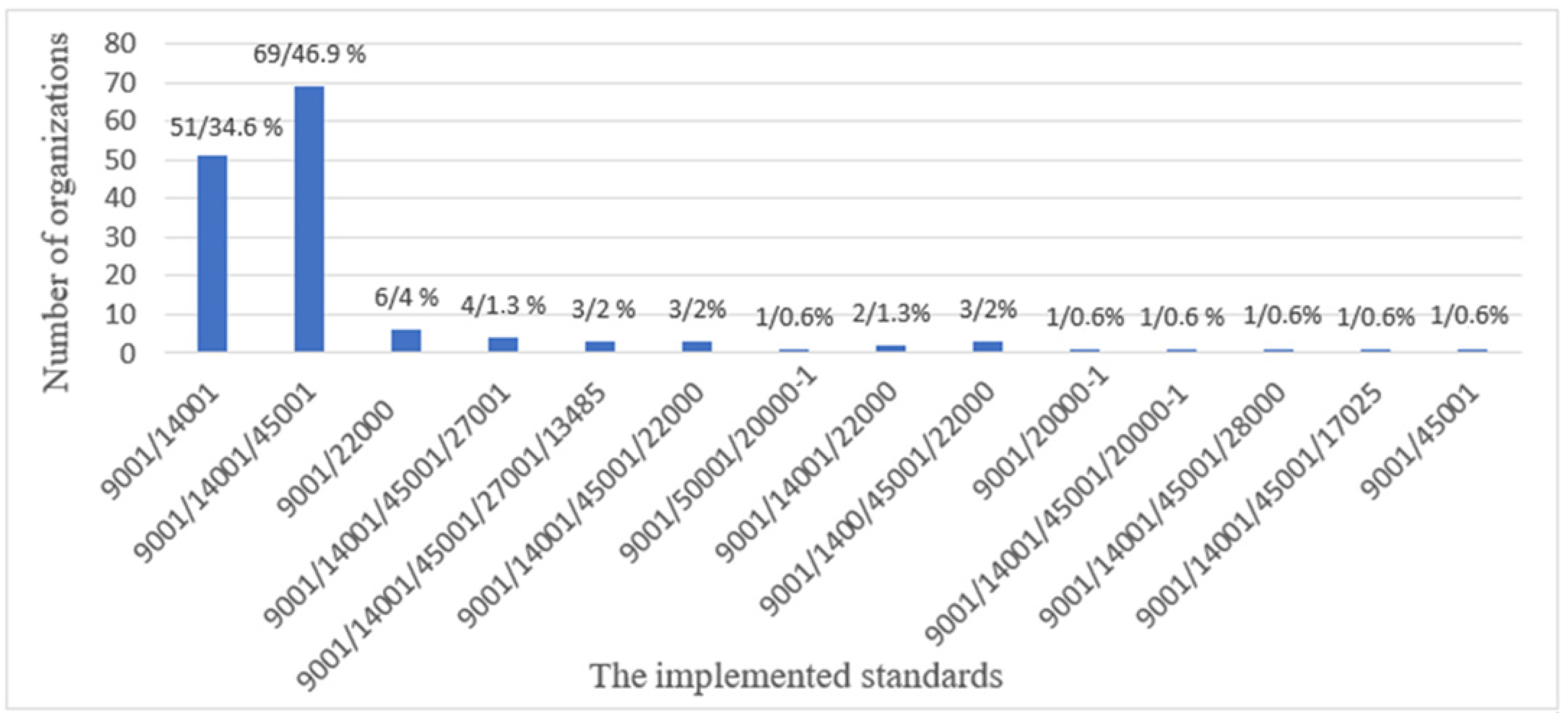
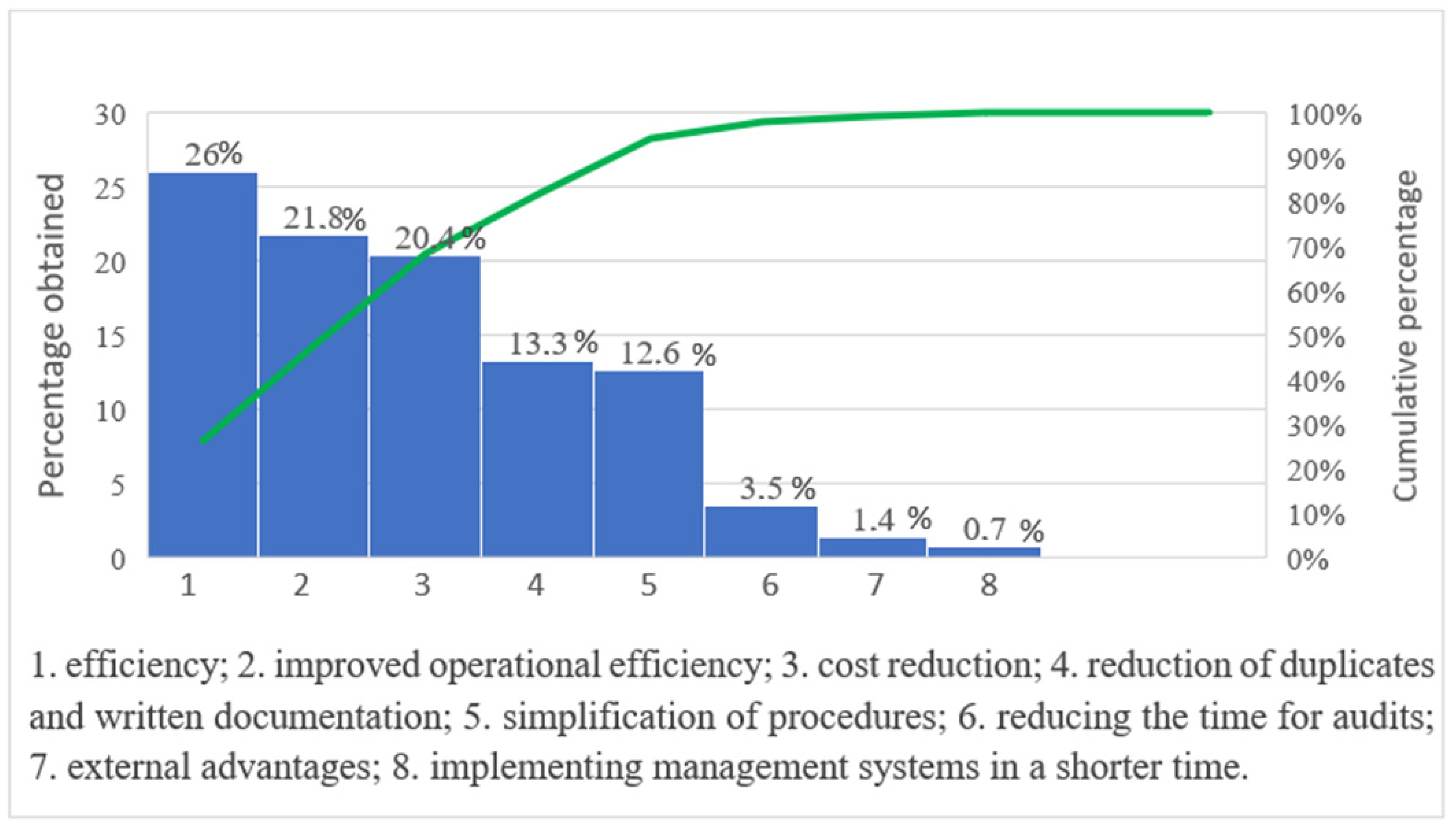
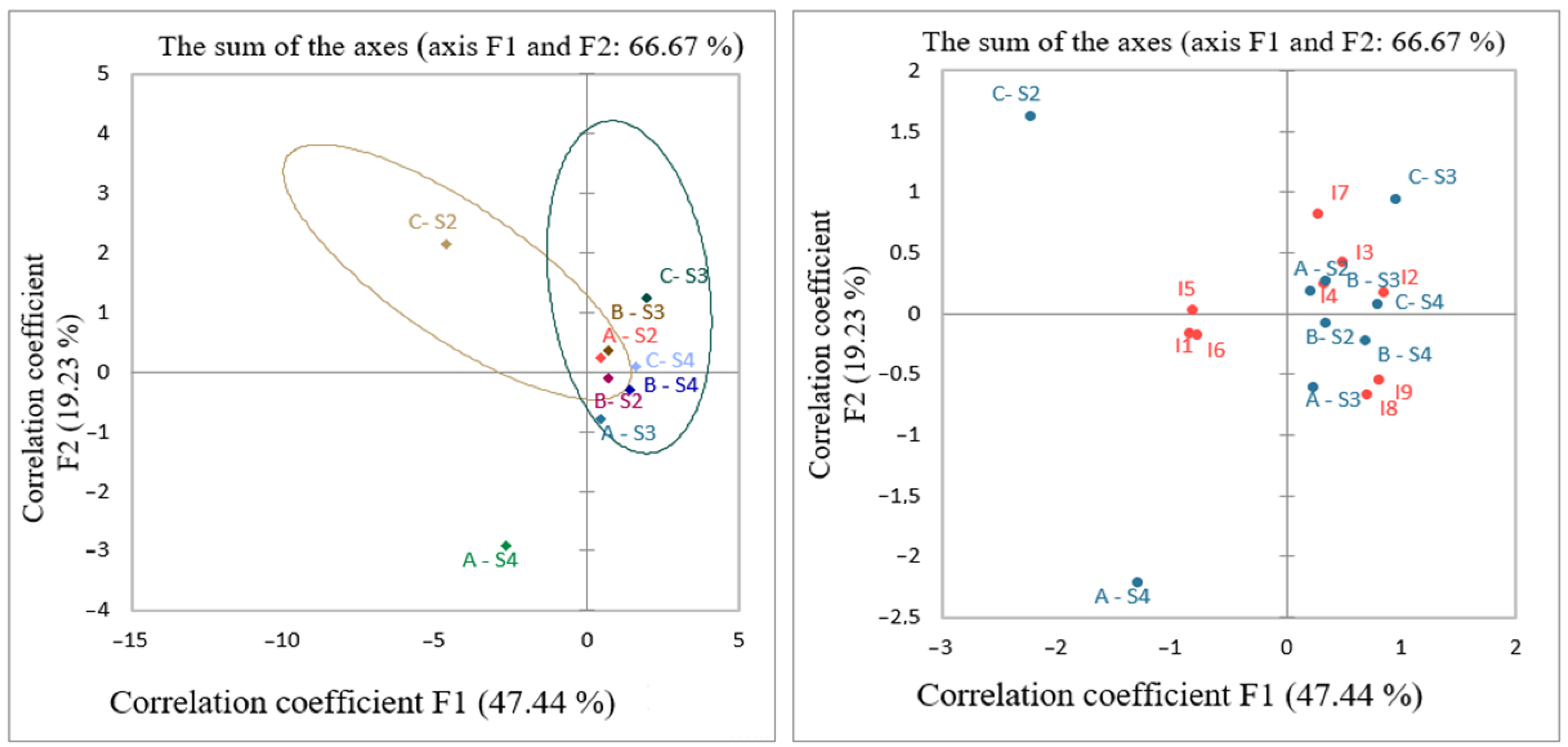


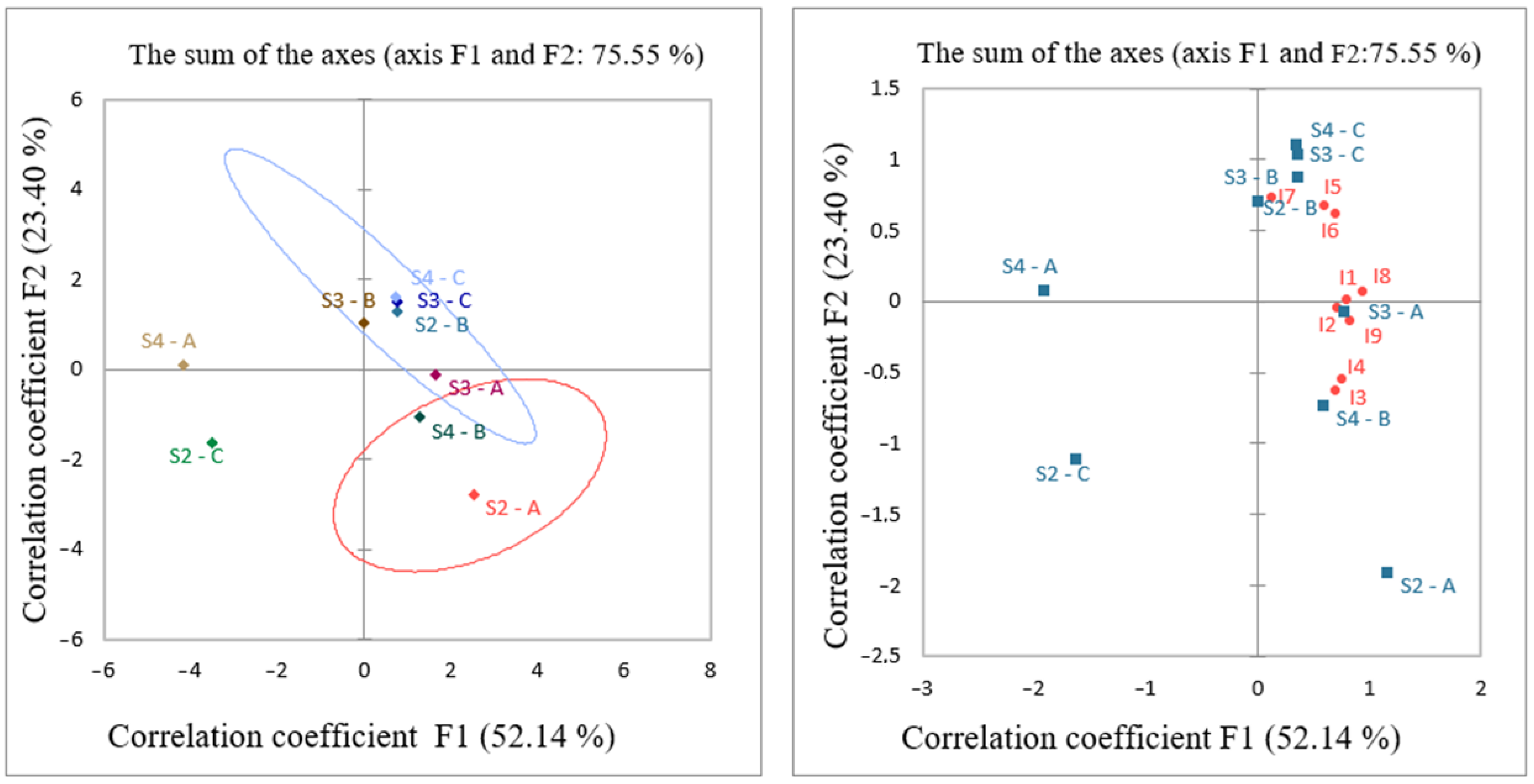

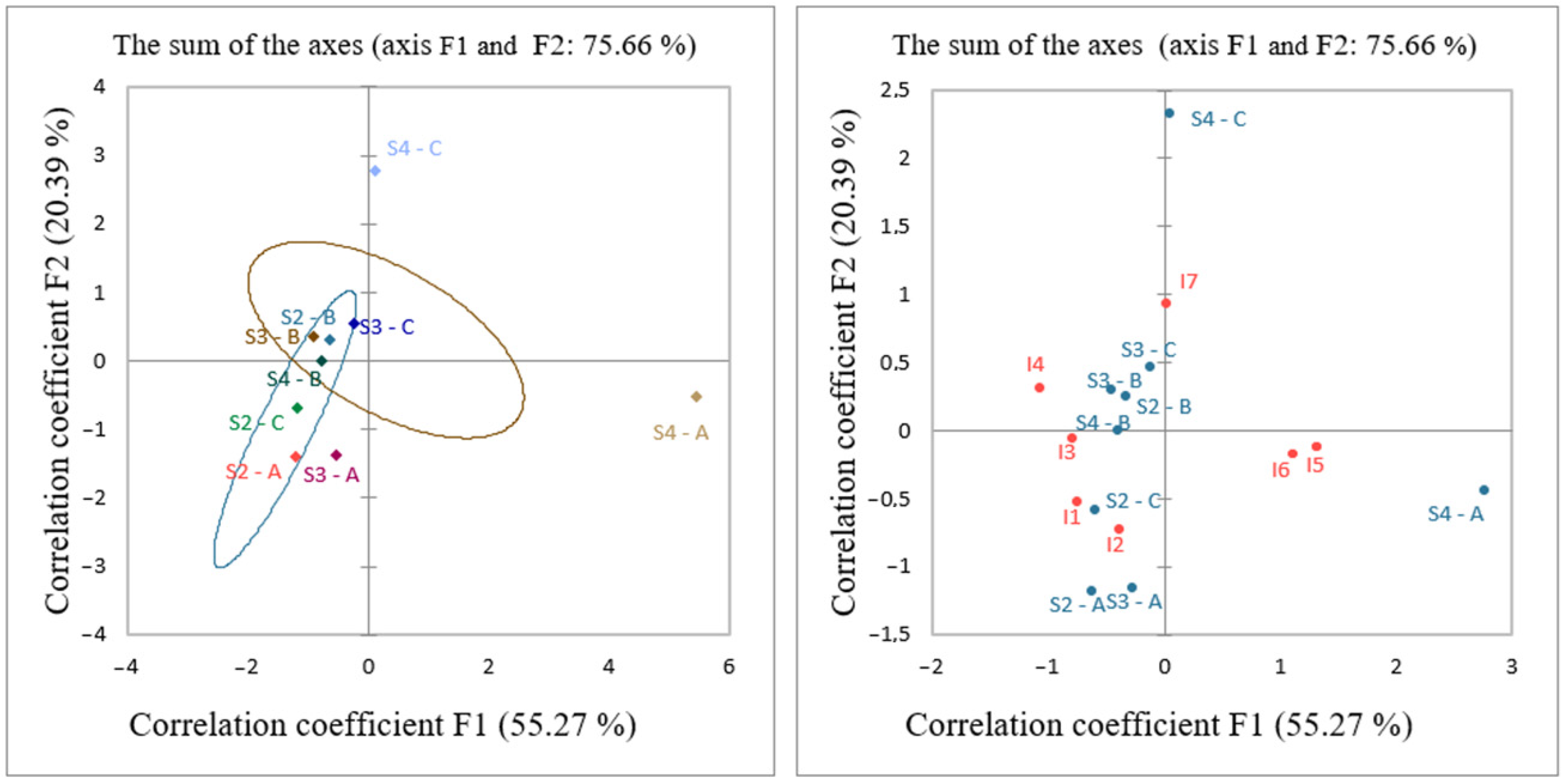

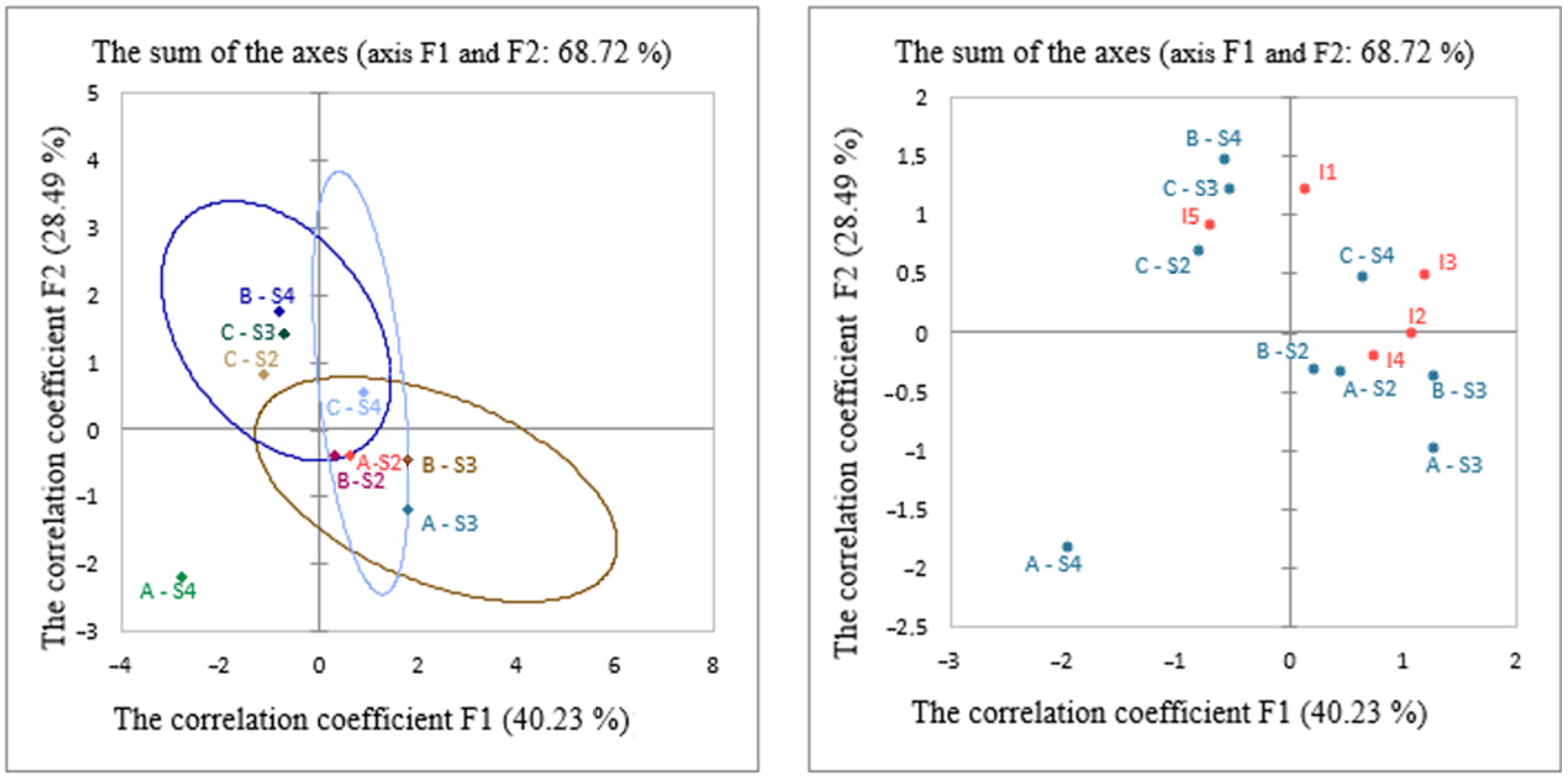
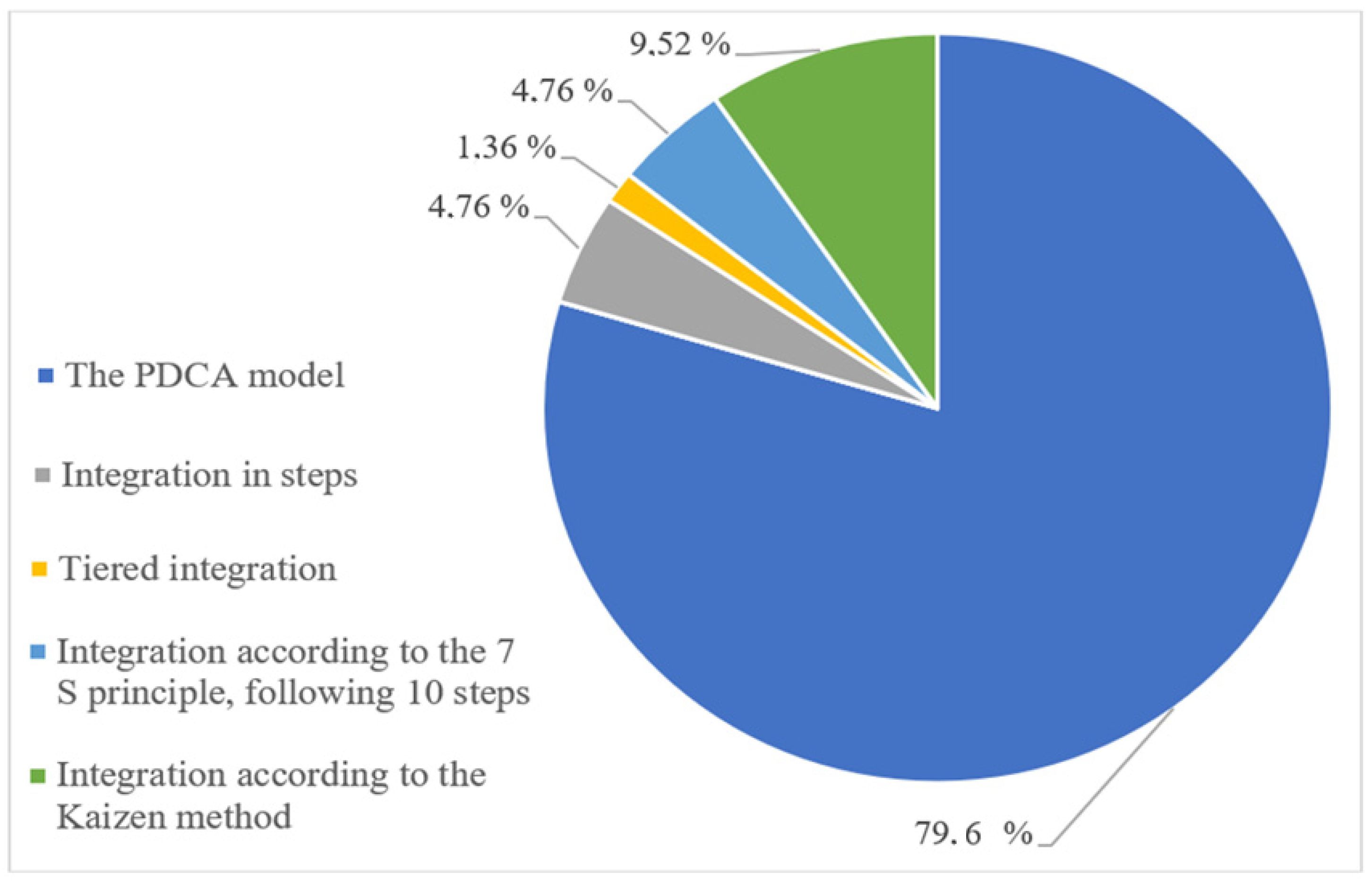
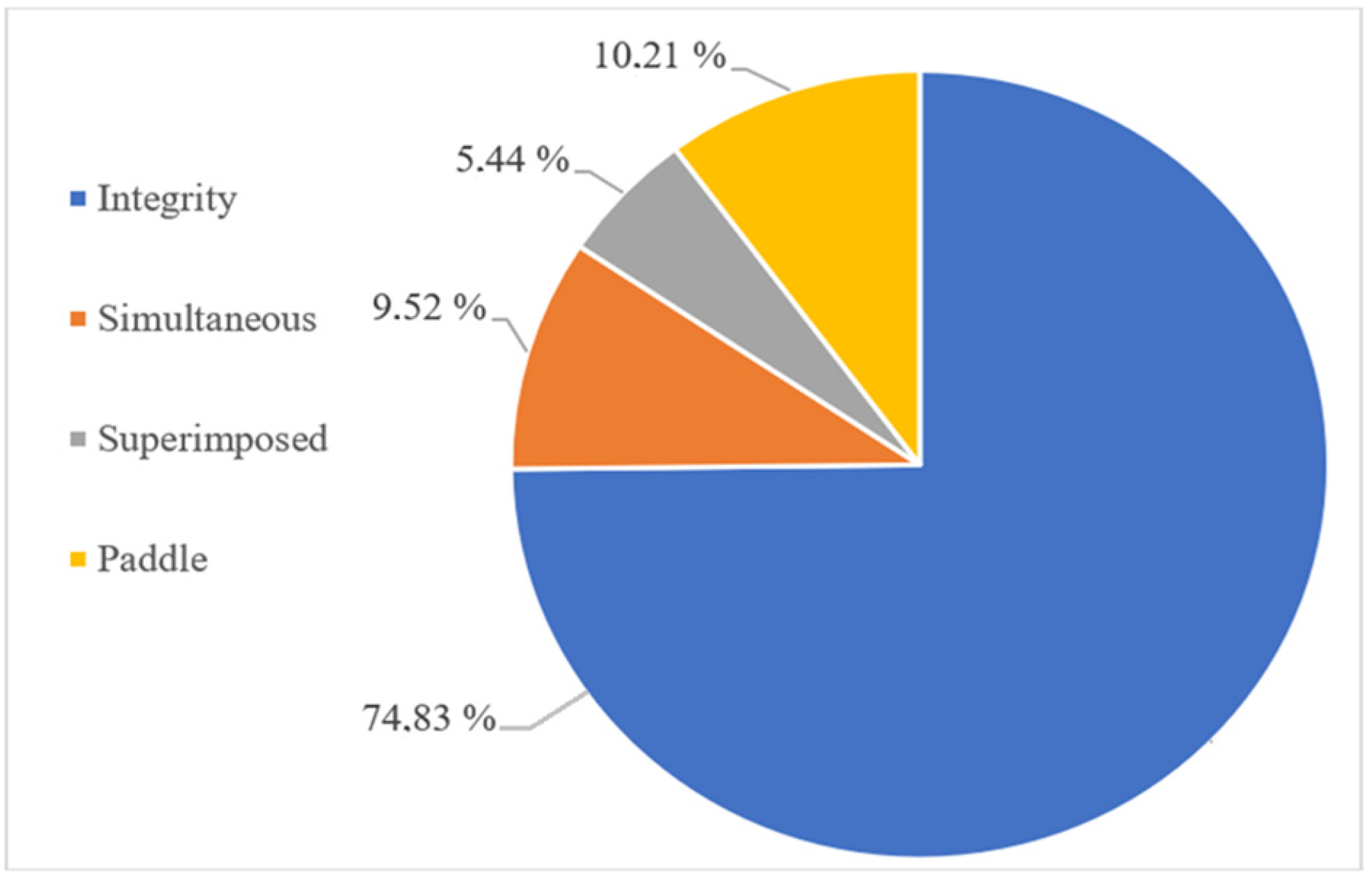

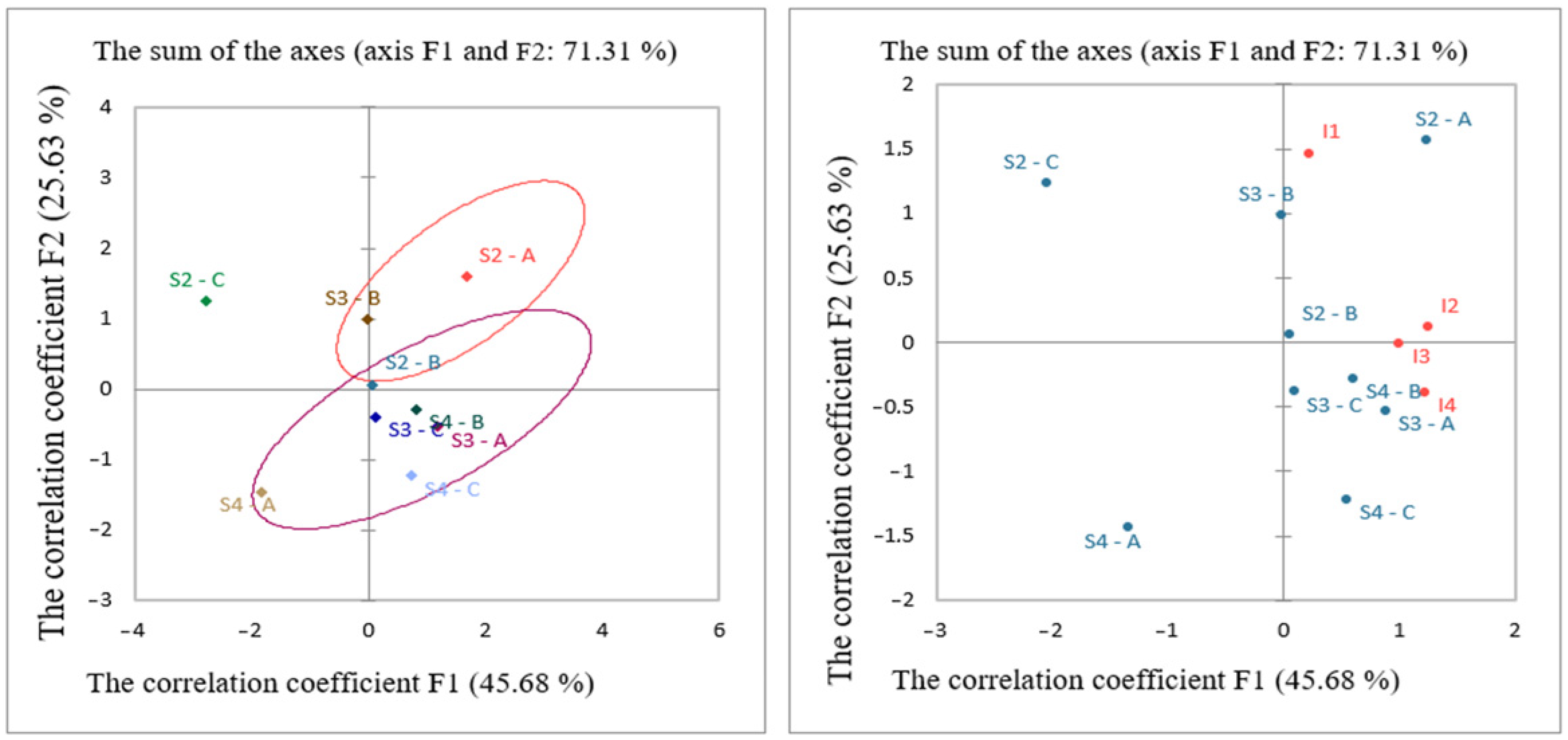
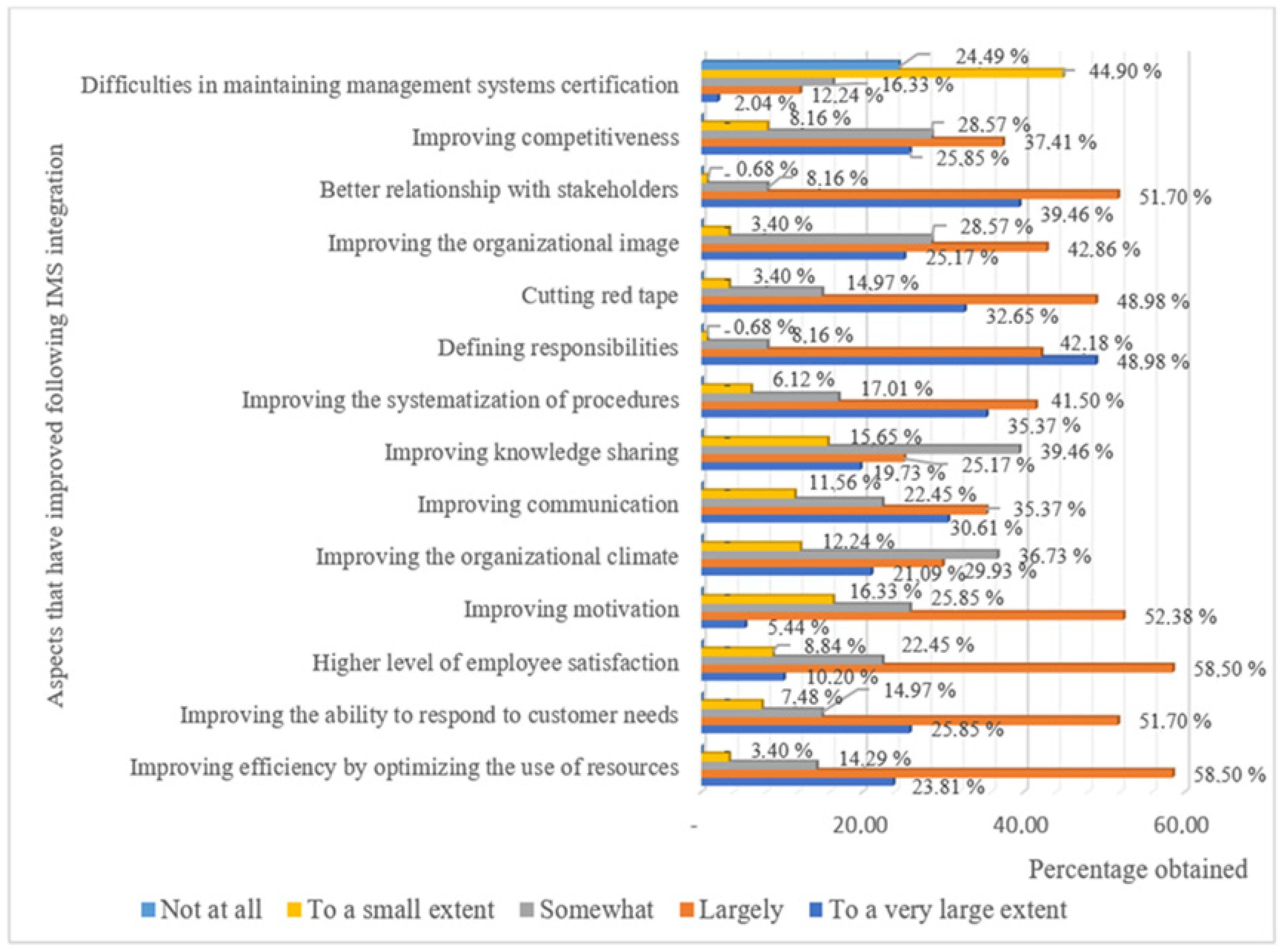

| Number of Employees | ||
|---|---|---|
| 30–100 | 100–500 | >500 |
| 31 | 83 | 33 |
Disclaimer/Publisher’s Note: The statements, opinions and data contained in all publications are solely those of the individual author(s) and contributor(s) and not of MDPI and/or the editor(s). MDPI and/or the editor(s) disclaim responsibility for any injury to people or property resulting from any ideas, methods, instructions or products referred to in the content. |
© 2025 by the authors. Licensee MDPI, Basel, Switzerland. This article is an open access article distributed under the terms and conditions of the Creative Commons Attribution (CC BY) license (https://creativecommons.org/licenses/by/4.0/).
Share and Cite
Ispas, L.; Mironeasa, C.; Silvestri, A. A Study on the Emergence and Resilience of Integrated Management Systems in Organizations with an Industrial Profile in Romania. Sustainability 2025, 17, 2401. https://doi.org/10.3390/su17062401
Ispas L, Mironeasa C, Silvestri A. A Study on the Emergence and Resilience of Integrated Management Systems in Organizations with an Industrial Profile in Romania. Sustainability. 2025; 17(6):2401. https://doi.org/10.3390/su17062401
Chicago/Turabian StyleIspas, Lucian, Costel Mironeasa, and Alessandro Silvestri. 2025. "A Study on the Emergence and Resilience of Integrated Management Systems in Organizations with an Industrial Profile in Romania" Sustainability 17, no. 6: 2401. https://doi.org/10.3390/su17062401
APA StyleIspas, L., Mironeasa, C., & Silvestri, A. (2025). A Study on the Emergence and Resilience of Integrated Management Systems in Organizations with an Industrial Profile in Romania. Sustainability, 17(6), 2401. https://doi.org/10.3390/su17062401






